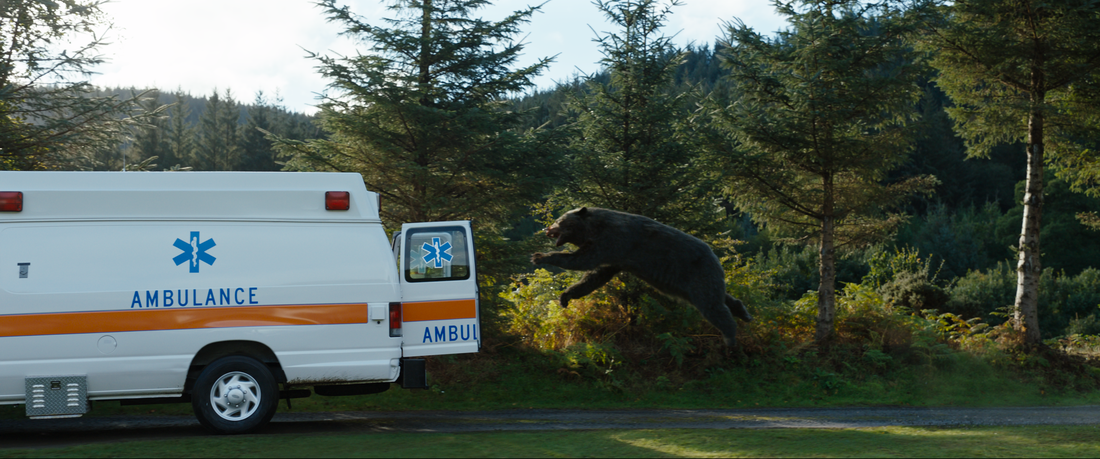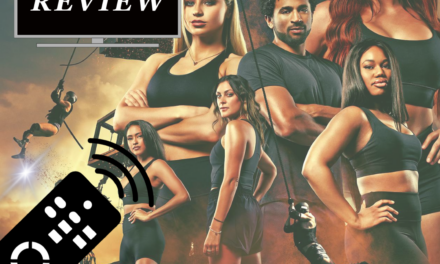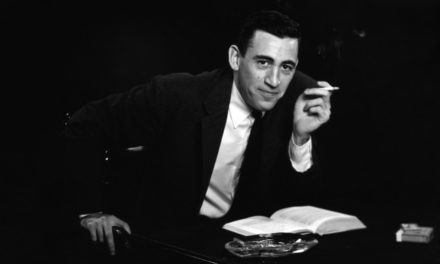This review contains spoilers.
Man versus nature: it’s a question for the ages, and one a movie about the perils of a bear on cocaine is perhaps most unexpected to answer. How successful “Cocaine Bear” is at fully answering this question is perhaps more expected. It had lofty ambitions that it didn’t quite achieve.
“Cocaine Bear” was released to theaters on Feb. 24. The film is directed by Elizabeth Banks and follows the story of a bear who goes on a cocaine-fuelled rampage after coming across a bag of cocaine from a failed drug drop over the Tennessee mountains. The bear’s bender turns bloody when our cast of characters wander into the woods. The unsuspecting victims range from Liz, a park ranger (Margo Martindale), to Eddie and Daveed, the drug dealers looking for their lost stash (Alden Ehrenreich and O’Shea Jackson Jr.).

Courtesy of Universal Pictures
This film is as ridiculous as it sounds — a bear on cocaine is fodder for endless jokes on its own. It’s a film that sells itself on a concept that immediately seems like perfect material for a campy, culty instant classic. But where “Cocaine Bear” fell short for me was that it presented an absurd concept and that was it; it wasn’t pushed far enough. The movie’s best joke is the bear being on cocaine, but it was used so much throughout the film that it was dead before the movie was over.
Moreover, the film used predictable shots that made any jump scares or narrative shifts easily anticipated and thus ruined. When the bear stuck his hand through the window, grabbing his victims head, the wide shot of the window and anxious head lingered just a little bit too long to make it obvious what would happen next. The film had such a wonderful concept, but it didn’t lean into the eccentricity of its subject matter as much as it could have. A film about a bear on cocaine should be unpredictable. It felt like a commercial high-budget action movie, when it should have felt like a low-budget passion project from some unknown director that you happen to stumble upon.
It seems the strategy of the film was to pack in as many ridiculous characters as possible and then have a few “serious” characters to ground the audience and signal the shifts in tone. However, I wish all the characters in the film were equally ridiculous because the presence of these more level-headed characters like Sari (Keri Russell) and Daveed were reduced in an attempt to give the audience characters to laugh with. When Daveed sighs at something stupid that Eddie says, it was the film pointing out its jokes and telling the audience when to laugh — when really I just wanted to laugh at the movie. The movie insists that it is in on the joke, but that’s the issue. A campy film needs to suspend its dignity for the sake of sincerity and true comedy.
Despites its many flaws, the film had some highlights. Martindale’s performance as the bumbling, gun-toting park ranger was the perfect balance of earnestness and ridiculousness. One scene where Martindale’s character accidentally shoots Ponytail (Leo Hanna) in the head is great. It is exactly the kind of stupidity that I would expect from a movie like this, but it was unexpected enough to make me chuckle. Of course the one person who is perhaps most qualified to deal with an aggressive bear is the most incompetent. She also arguably has the best death; the scene of her sliding face-first out of an ambulance was both visceral and gross and had a touch of irony that was appropriate for such an incapable character.
Some moments in the film do try to push the narrative a bit. The parallel between Sari (Keri Russell) and the bear presents an interesting way for the audience to see the bear not as the villain, but as a victim. The two characters are simply trying to protect their respective cubs from harm and provide them with the best life they can. The “humanization” of the bear feels particularly significant given that this film is based on a real bear who was found dead in Tennessee next to a bag of cocaine. Shifting perspective and giving agency to the bear allows us to see that the real villain is, of course, Syd (Ray Liotta), the drug dealer who is responsible for the bear finding the cocaine in the first place. This brief moment of sincerity is a tonal shift that I appreciated as it added depth to the film, but it felt clunky and flat in the broader narrative because the bear ripping people apart was the principal joke and point of the movie.
The magic of a campy cult classic is hard to pin down. It’s a mix of sincerity, absurdity and low-budget effects that creates something so outrageous and bad that it becomes funny and surprisingly wonderful. “Cocaine Bear” doesn’t quite have that magic. Maybe it’s too aware of itself — too desperate to make something with that intangible magical quality that makes it stick. The film isn’t a complete waste of time. It is short and a fairly easy watch, but if you want to watch something that succeeds at being culty, there are other films that are better worth your time and appreciation.
Bridget Mackie (she/her) (25C) is from Cary, North Carolina and majoring in English. Outside of the Wheel, Bridget likes to make art, knit sweaters and collect plants.







